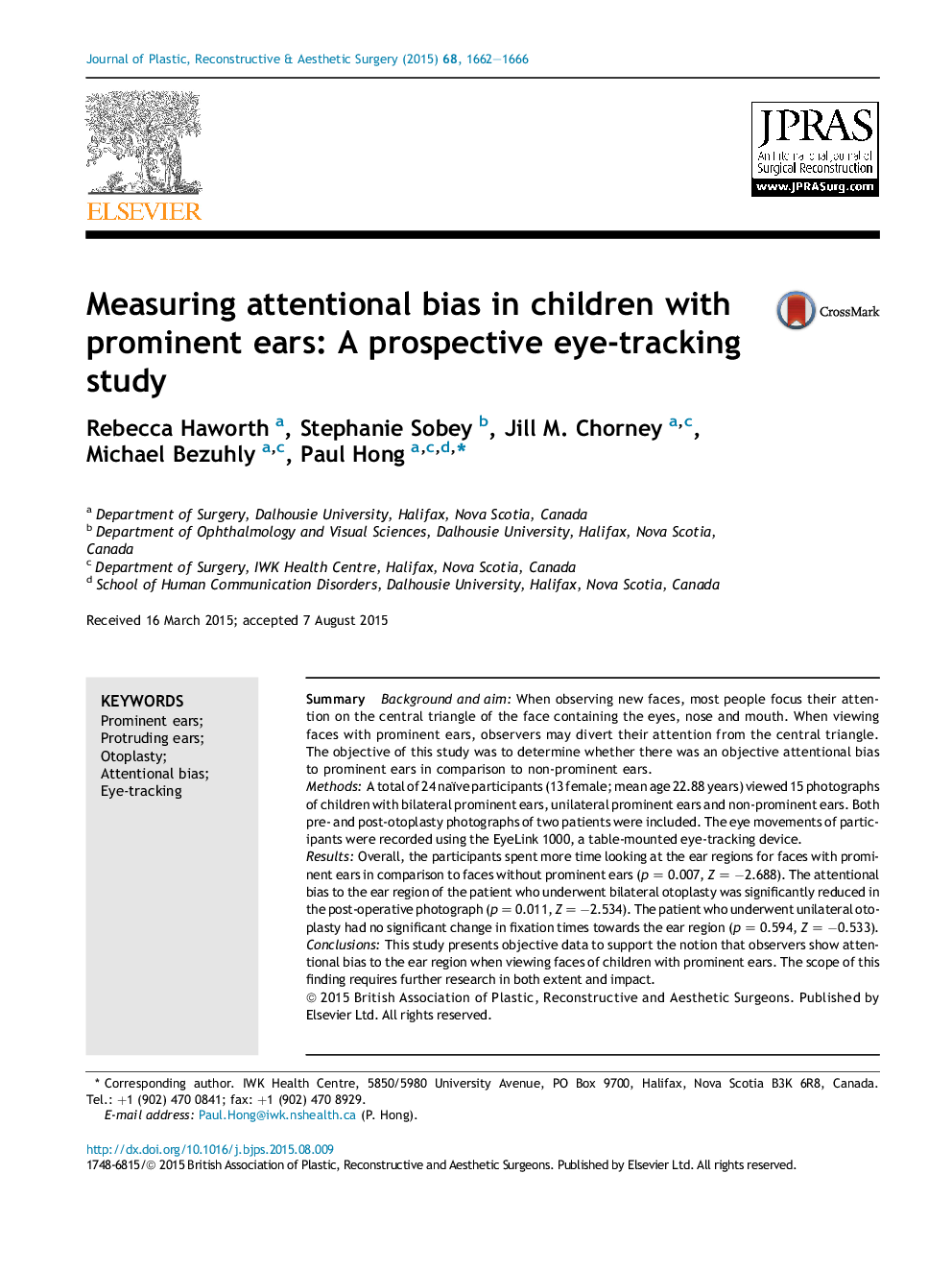| Article ID | Journal | Published Year | Pages | File Type |
|---|---|---|---|---|
| 4117479 | Journal of Plastic, Reconstructive & Aesthetic Surgery | 2015 | 5 Pages |
SummaryBackground and aimWhen observing new faces, most people focus their attention on the central triangle of the face containing the eyes, nose and mouth. When viewing faces with prominent ears, observers may divert their attention from the central triangle. The objective of this study was to determine whether there was an objective attentional bias to prominent ears in comparison to non-prominent ears.MethodsA total of 24 naïve participants (13 female; mean age 22.88 years) viewed 15 photographs of children with bilateral prominent ears, unilateral prominent ears and non-prominent ears. Both pre- and post-otoplasty photographs of two patients were included. The eye movements of participants were recorded using the EyeLink 1000, a table-mounted eye-tracking device.ResultsOverall, the participants spent more time looking at the ear regions for faces with prominent ears in comparison to faces without prominent ears (p = 0.007, Z = −2.688). The attentional bias to the ear region of the patient who underwent bilateral otoplasty was significantly reduced in the post-operative photograph (p = 0.011, Z = −2.534). The patient who underwent unilateral otoplasty had no significant change in fixation times towards the ear region (p = 0.594, Z = −0.533).ConclusionsThis study presents objective data to support the notion that observers show attentional bias to the ear region when viewing faces of children with prominent ears. The scope of this finding requires further research in both extent and impact.
